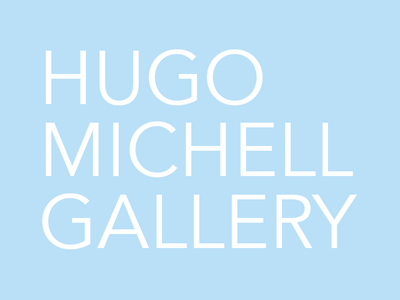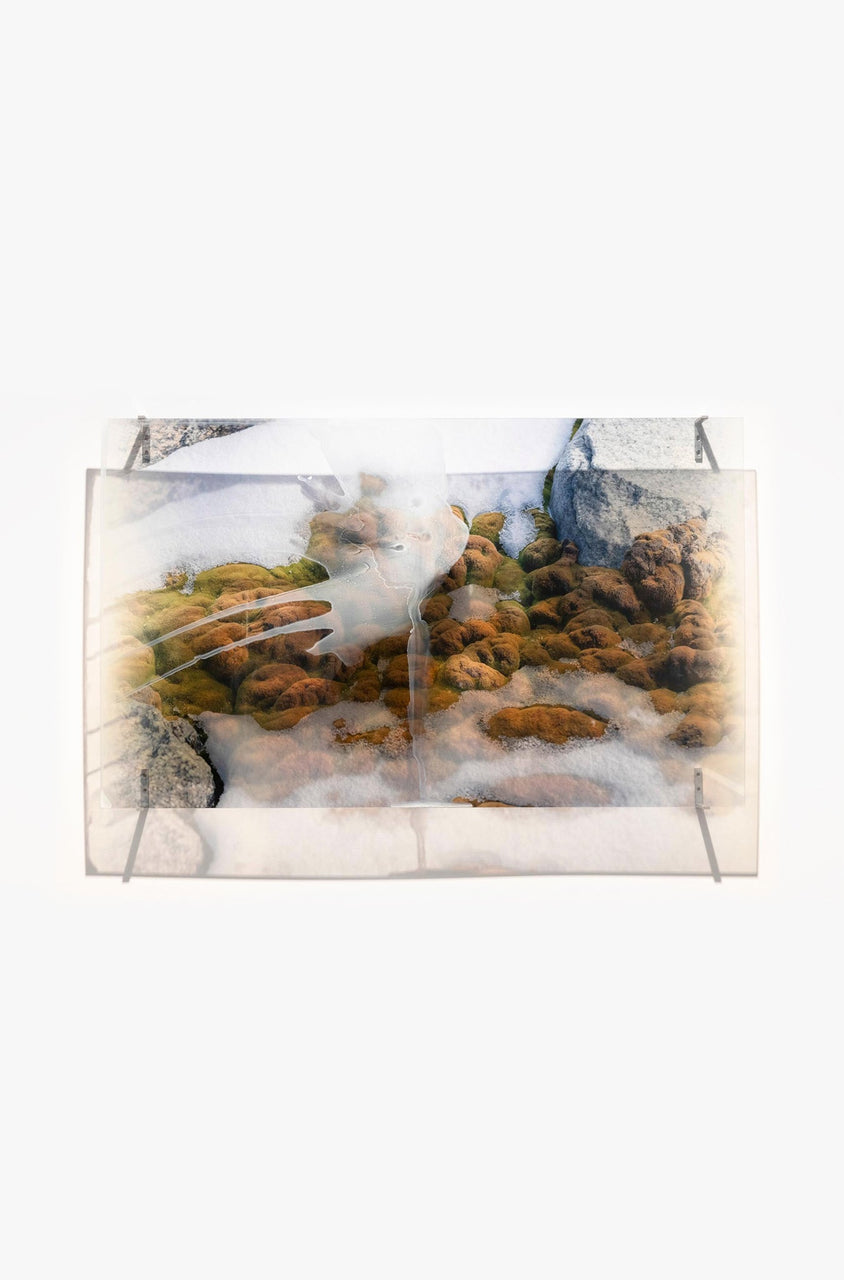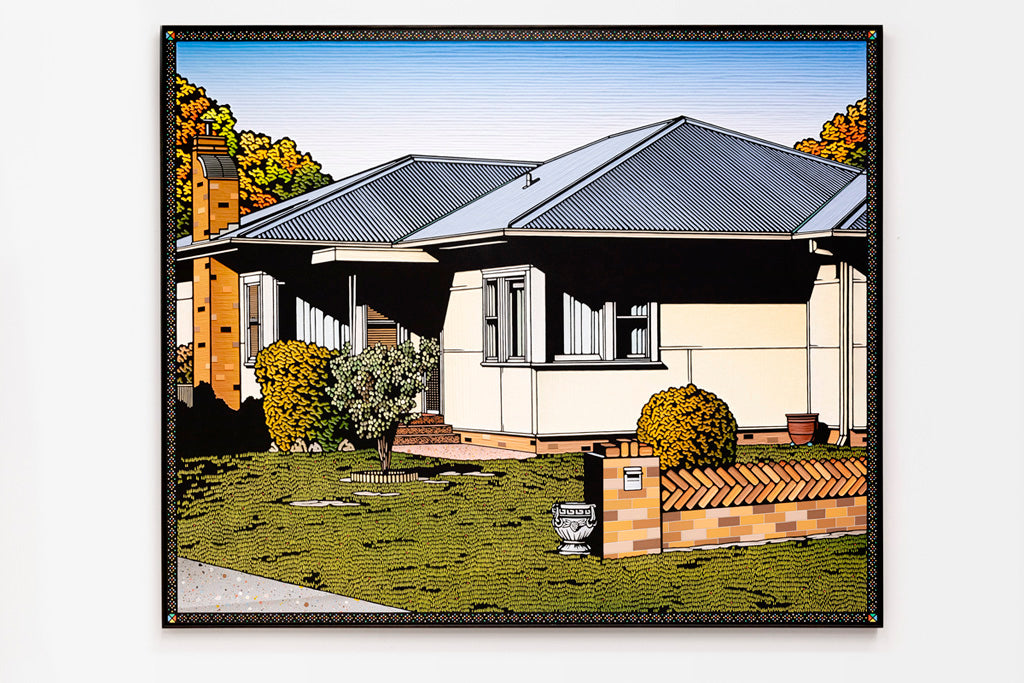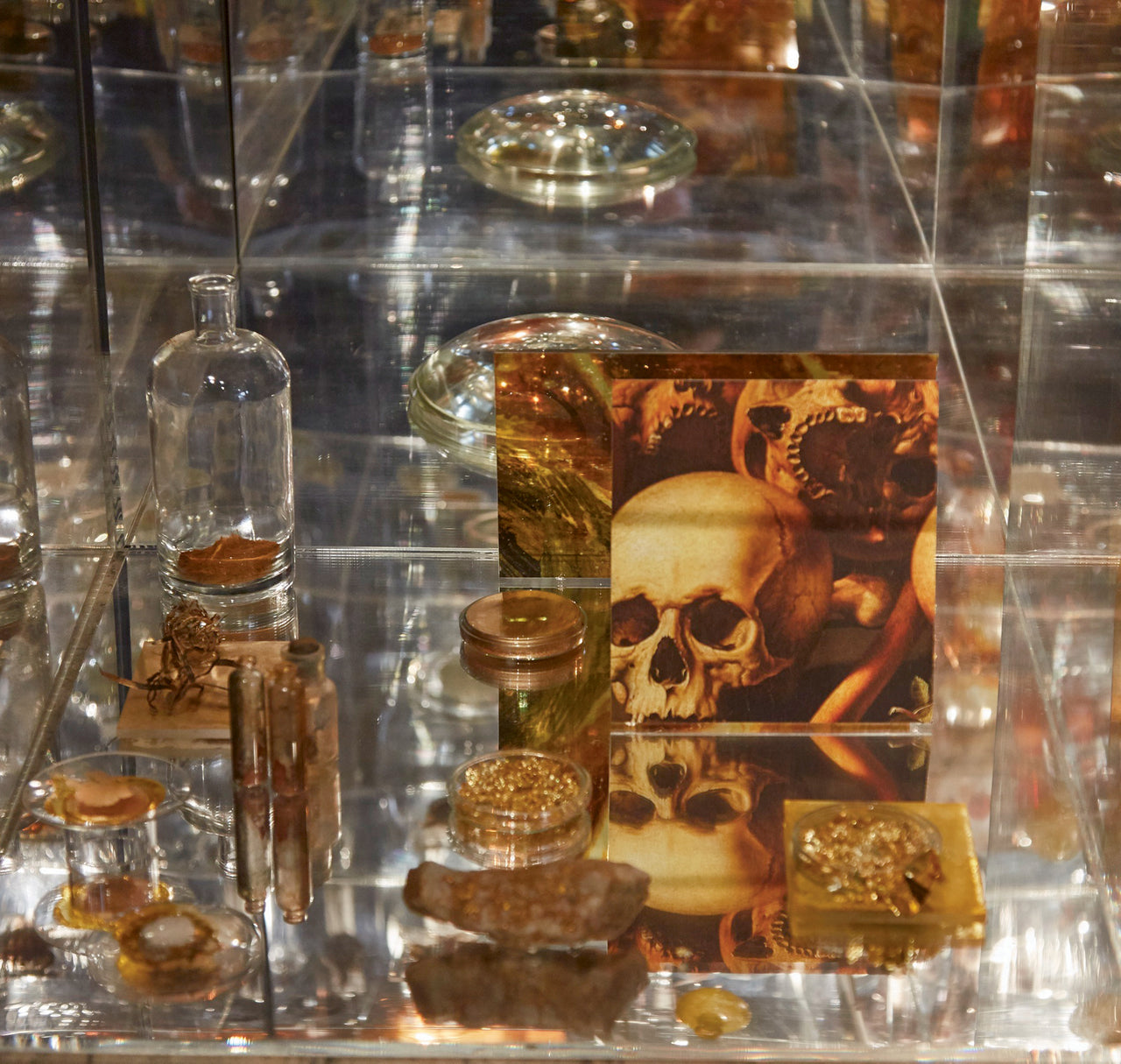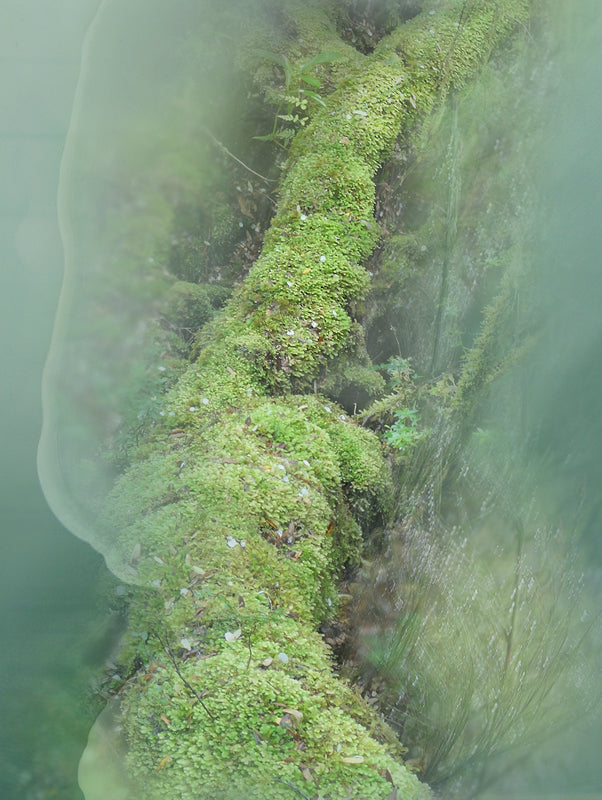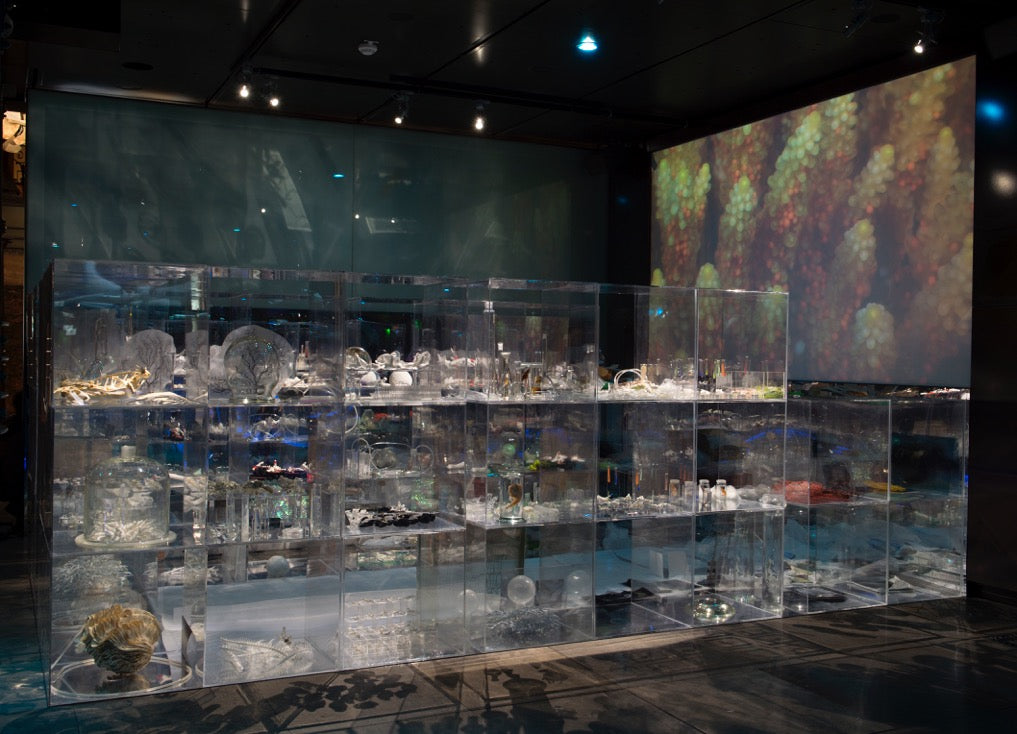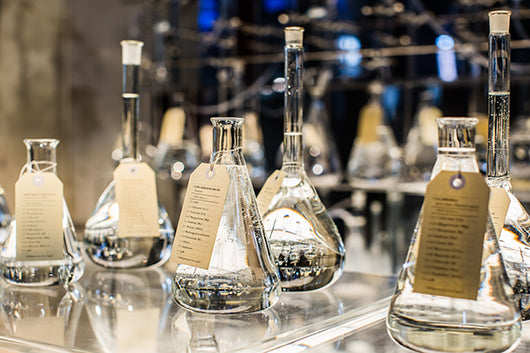Janet Laurence
Navigating Necessities
Garden for an alchemist

Hugo Michell Gallery are proud to partner with Bird in Hand Winery for this opening event.
Hugo Michell Gallery acknowledges the Kaurna people as the traditional custodians of the Adelaide region, and that their cultural and heritage beliefs are still as important to the living Kaurna people today.
Congratulations to Narelle Autio and Janet Laurence who have been selected as finalists in the 2022 Bowness Photography Prize!
Over the last 16 years, the Bowness Photography Prize has emerged as an important annual survey of contemporary photographic practice in Australia and one of the most prestigious prizes in the country. The winning work will be awarded $30,000 and will be acquired into Monash Gallery of Art’s nationally significant collection of Australian photographs.
This prize will be announced on Thursday 6th of October. The exhibition will be on display from 29 September to 13 November at the Monash Gallery of Art.


Janet Laurence explores the Johnston Collection within the context of her own practice – saving, collecting and preserving the natural environment, as written in the Sydney Morning Herald,
Laurence wants her site-specific art installation – the latest instalment in the museum’s “house of ideas” series, opening this Monday – to reflect how gardening “was a big thing in William Johnston’s life and in his mind”. “He had a garden here and another elsewhere. A garden becomes very important to a person. You create it and it grows with your help and, while I was in this house, I thought about that.”
Exhibition runs July 8 – Sept 17 at the Johnston Collection, East Melbourne.
After Nature, the first major survey of Janet Laurence’s career, is now showing at the Museum of Contemporary Art Australia. Presenting work from Laurence’s expansive career, the exhibition will features a range of work from sculpture, installation, photography, and video.
For over 30 years, Laurence has explored the interconnection of all living things – animal, plant, mineral – through a multi-disciplinary approach. She has employed diverse materials to explore the natural world in all its beauty and complexity, and to highlight the environmental challenges it faces today: the era of the Anthropocene.
Janet Laurence: After Nature includes key works from the artist’s career, with loans from public institutions around Australia and the MCA Collection work Cellular Gardens (where breathing begins) (2005). They encompass her alchemical works of the early 1990s that use metal plates, minerals, organic substances and lightboxes, through to her installations of the 2000s and beyond, incorporating plant and animal specimens within transparent vitrines and ‘wunderkammer’ environments. Laurence’s works reflect on the fragility of the natural world, its plight and potential restoration.
Central to the exhibition is a major new MCA commission, entitled Theatre of Trees, which brings together the last decade of Laurence’s research into plants, their medicinal and healing powers, and trees.
This exhibition has evolved from two decades of collaboration between Janet Laurence and MCA Chief Curator Rachel Kent, who curated Laurence’s exhibition Muses at the Ian Potter Museum of Art, the University of Melbourne in 2000.
Janet Laurence
After Nature
1 March – 10 June 2019
MCA: Gallery Level 1
Key Links:
Purchase Catalogue
Read the Curatorial Essay by MCA Chief Curator Rachel Kent
MCA behind-the-scenes short film
Press Coverage:
Talking with Trees event series listed in UNSW Newsroom
Review in The Age
Review in The Australian
Review in Art Guide
Review in Art Almanac
Review in the Sydney Morning Herald
Hugo Michell Gallery invites you to the opening of Janet Laurence’s ‘Phytophilia’ and Tarryn Gill’s ‘Dearly Beloved’.
In Laurence’s latest exhibition, ‘Phytophilia’, the artist furthers her examination of medical and historical relationships within the natural world through a series of photographs.
Exploring notions of art, science, imagination, memory, and loss, Laurence’s practice examines our physical, cultural, and conflicting relationship with the natural world, through site-specific, gallery, and museum works. Working in varying mediums, Laurence creates immersive environments that navigate the interconnections between life and world.
—-
‘Dearly Beloved’ is a new installation-based work by Tarryn Gill, developed from the ‘Guardian’ series recently exhibited in the 2016 Adelaide Biennial of Australian Art. ‘Dearly Beloved’ draws heavily upon theatrical conventions, and reflects Gill’s interest in combining personal memories and family histories with imagery drawn from mythology to imagine a space between the earthly and other-worldly. Each of the sculptures in this installation is approached as either a self-portrait or a portrait of her immediate family, and suspended together from the ceiling. Each individual portrait becomes part of the larger installation – a family tree imagined as a constellation.
Please join us in celebrating these two incredible exhibitions and our final opening of the year!
The Museum of Contemporary Art has announced their 2019 program which includes the first major survey of esteemed artist Janet Laurence title After Nature. Presenting work from Laurence’s expansive career, the exhibition will feature a range of work from sculpture, installation, photography and video.
For over 30 years, Laurence has explored the interconnection of all living things – animal, plant, mineral – through a multi-disciplinary approach. She has employed diverse materials to explore the natural world in all its beauty and complexity, and to highlight the environmental challenges it faces today: the era of the Anthropocene.
Janet Laurence: After Nature includes key works from the artist’s career, with loans from public institutions around Australia and the MCA Collection work Cellular Gardens (where breathing begins) (2005). They encompass her alchemical works of the early 1990s that use metal plates, minerals, organic substances and lightboxes, through to her installations of the 2000s and beyond, incorporating plant and animal specimens within transparent vitrines and ‘wunderkammer’ environments. Laurence’s works reflect on the fragility of the natural world, its plight and potential restoration.
Central to the exhibition is a major new MCA commission, entitled Theatre of Trees, which brings together the last decade of Laurence’s research into plants, their medicinal and healing powers, and trees.
This exhibition has evolved from two decades of collaboration between Janet Laurence and MCA Chief Curator Rachel Kent, who curated Laurence’s exhibition Muses at the Ian Potter Museum of Art, the University of Melbourne in 2000.
Janet Laurence
After Nature
1 March – 10 June 2019
Press Coverage:
UNSW Newsroom
Sydney Morning Herald
Janet Laurence is exhibiting in a number of international exhibitions, including Warning Shot at Topographie de l’Art, France, Moving Plants at Rønnebæksholm, Denmark, and Force of Nature, streaming online. An advocate for environmental issues, Laurence creates immersive installations that investigate the relationship between nature and the greater eco-system.
Warning Shot, Topographie de l’Art, France
Warning Shot, curated by Barbara Polla, features Janet Laurence alongside Amy Balkin, Ursula Biemann, Janet Biggs, Shaun Gladwell, Joanna Malinowska, and Gianluigi Maria Masucci. Laurence will exhibit Deep Breathing: Resuscitation for the Reef, a video work which was exhibited widely through 2016, including at the Muséum National d’Histoire Naturelle and the Australian Museum.
Exhibition runs from July 5 to 27. For more information head here.
Force of Nature, Carte Blanche to James Putnam
Force of Nature is an ongoing contemporary art project previously staged in London and Brussels. It aims to examine the way contemporary artists have been inspired not only by nature but also its processes – evolution, birth, growth, ageing, decay, change. Taking inspiration from nature’s inherent forces, their acute observations and individual approaches can result in works that are site-specific, monumental or ephemeral. Nature is constantly in a state of change and the artists’ awareness and sensitivity to this change is crucial to the creation of their work that can be representational, conceptual, abstract, and sometimes otherworldly.
Curated by James Putnam, Force of Nature features Janet Laurence, Antti Laitinen, Iyvone Khoo, and Cameron Robbins. Laurence exhibits a 2016 video work titled The Persistence of Nature.
See Ikon website for streaming details, and for more information head here.
Moving Plants at Rønnebæksholm, Denmark
Moving Plants is an exhibition and event series focusing on local plants based on the Laurence’s work in climate and environmental issues, including why plants are among our main earthbound partners, if we want to understand and survive in the new, climate-changed world.
The exhibition displays works by various artists from Denmark, Sweden, Hong Kong, Japan, USA, and Australia, many of whom have traveled halfway around the globe to work with local plants. Consequently, the exhibition examines global issues, while relating to Rønnebæk Holm’s own framework and local roots.
Laurence exhibits alongside Watanabe Koichi, Yukiki Iwatani, Yeung Lin On, Camilla Berner, Wai Yi-Lai, Åsa Sonjasdotter, and Karin Lorentzen.
Exhibition runs July 1 to September 24. For more information head here.
Janet Laurence is featured in Troubled Waters at the Anne & Gordon Samstag Museum of Art. Troubled Waters is a UNSW Art & Design exhibition curated by Dr Felicity Fenner. Originally exhibited at the University of New South Wales, the exhibition will travel to Adelaide in late April.
A major collaborative project between UNSW Science and UNSW Art & Design, Troubled Waters illustrates the complex ecosystem of rivers and oceans by tracing the Murray from its source at Corryong in Victoria to its mouth in South Australia’s Coorong region. Works by multimedia artists, in close collaboration with leading environmental scientist Richard Kingsford, bring environmental research into the gallery to poetically interpret information not easily accessed by non-scientific audiences. The exhibition features work by Nici Cumpston, Tamara Dean, Bonita Ely, Georgia Wallace-Crabbe, Richard Kingsford, Andrew Belletty, and Janet Laurence.
Exhibition runs from April 28 to June 9.
For more details head here.
Hanse-Wissenschaftskolleg (HWK)
Janet Laurence will also undertake a six-week residency at the Hanse-Wissenschaftskolleg (HWK) in Delmenhorst, Germany. As an international Fellow, Laurence will continue work on her research project Blood and Chlorophyll. My Heart Wears Flowers and Fruits in the Night, commenced late last year.
The HWK promotes the disciplinary and interdisciplinary collaboration of internationally-renowned scientists and young investigators by offering guest scholars (Fellows) the opportunity to concentrate on research projects for a certain space of time without the distractions of their regular academic responsibilities.
Laurence will undertake the residency from April to June this year.
For more information head here.
Congratulations to Janet Laurence who has been selected to participate in the 56th October Salon in Belgrade, The Pleasure of Love: Transient Emotion in Contemporary Art and the XIII Bienal de Cuenca: Fragile.
56th October Salon, Belgrade
The 56th October Salon in Belgrade, The Pleasure of Love: Transient Emotion in Contemporary Art will feature Janet Laurence alongside fellow Australian artist Tracy Moffatt. Curated by David Elliot, the 56th October Salon includes 60 artists both emerging and established, Laurence will be exhibiting two major works Underlying (2016) and Vanishing (2009).
“Laurence explores what it might mean to heal, albeit metaphorically, the natural environment. Trees are the lungs of our cities – they exchange carbon dioxide and oxygen – and they usually live for several generations. Today, however, very old trees are dying in our cities, while the crops and fields in the outback have been transformed into vast barren expanses. Janet Laurence fuses this sense of communal loss with a search for connection with powerful life-forces. Her work alerts us to the subtle dependencies between water, life, culture and nature in our eco-system. In the face of this, we yearn for a form of alchemy, for the power of enchantment or transformation. It seems that the only place for that sensation is the place of art. In the tradition of Joseph Beuys, and some of the Arte Povera artists from the 1960s, such as Jannis Kounellis or Mario Merz, Janet Laurence reminds us that art can act as a kind of transformation point for ideas and it can provoke its audience into a renewed awareness about our environment.” – Victoria Lynn
Exhibition runs from 23 September to 6 November 2016
For more information click here.
XIII Bienal de Cuenca
Janet Laurence will also exhibit in the XIII Bienal de Cuenca in a parallel exhibition Fragile curated by Natalia Bradshaw. This marks the first time Australian artists have been included in the Bienal de Cuenca, Laurence will be exhibiting alongside fellow Australian artists Maria Fernanda Cardoso, Reko Rennie and Caroline Rothwell.
“…Janet Laurence too explores impermanence, transparency and opacity Within her presentation for Cuenca. Known for her elegiac installations That address pressing environmental issues, she explores the physiology of medicinal plants from Ecuador and Their vital relationship to the human world Through This new, site-specific work. A long table supports glass vials, plastic tubing and laboratory equipment plant alongside locally sourced samples, all partially concealed (or Alternately revealed) fabric beneath a white veil. The imperiled state of the natural world, due to human intervention and catastrophe, is a recurring theme Within Laurence’s practice. All living things are Interrelated, she points out, and if we continue to treat the natural world With disregard, we will impact our own future survival as a species. Recently, Laurence has Explored the concept of the hospital as a space for the rehabilitation of plants and ecosystems under threat. The incorporation of laboratory equipment and white gauze in her works, treats including Cuenca, Suggests a space for healing and resuscitation.Through This new work, themes of interdependence and equilibrium are Brought to the fore, offering a sustainable future if we choose to acknowledge our own fragility and place Within the wider scheme of things.” – Rachel Kent, Chief Curator, Museum of Contemporary Art (MCA) Sydney, Australia
Exhibition runs from 21 October to 31 December 2016
For more information click here.
- 1
- 2
Showing: 1-10 of 15
